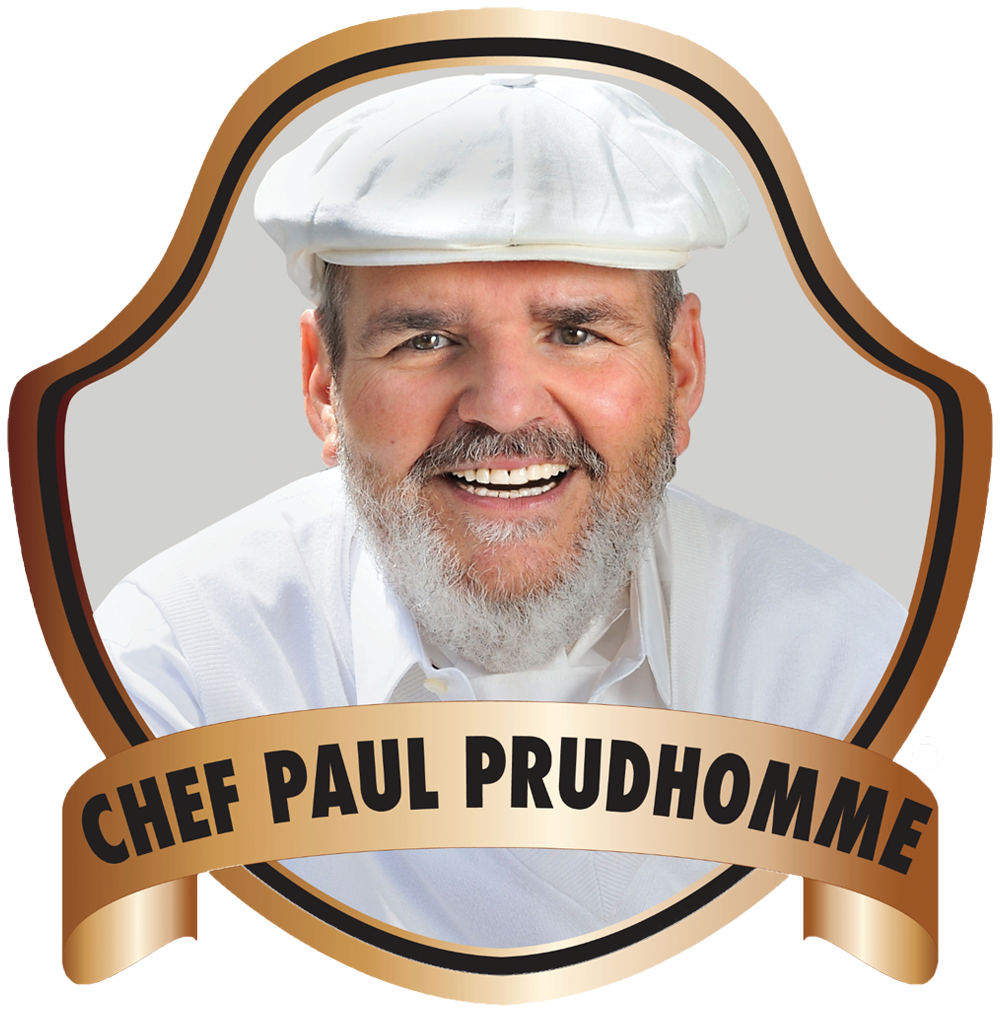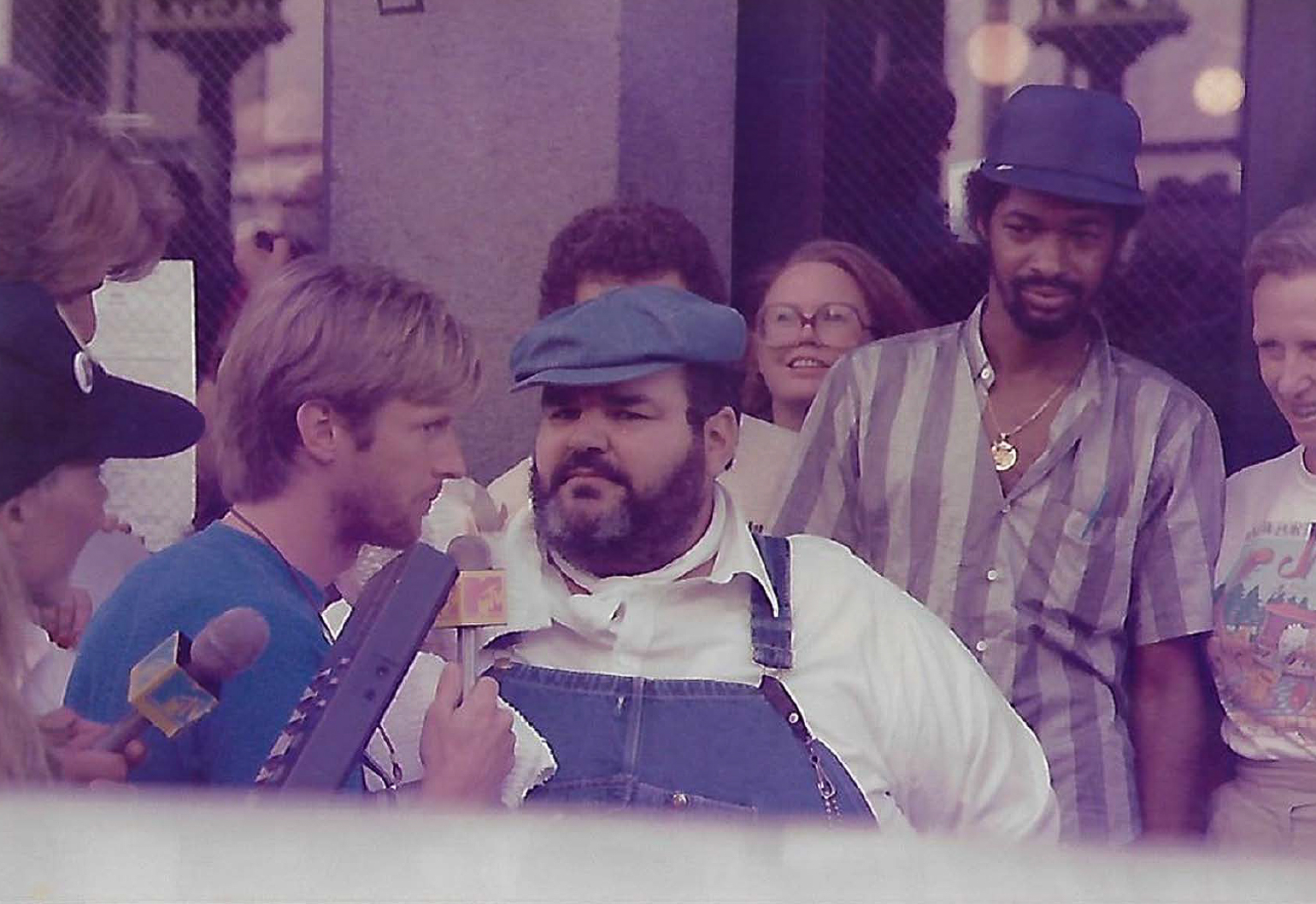From Restaurant to Bookshelf: The Birth of a Bestseller
As K-Paul’s Louisiana Kitchen’s fame grew, Chef Paul recognized an opportunity to share his love of Cajun cooking beyond the restaurant’s walls. His first cookbook, “Chef Paul Prudhomme’s Louisiana Kitchen,” published in 1984, became an instant bestseller and New York Times notable book. Unlike traditional cookbooks of the era, it wasn’t just recipes – it was a window into the soul of Louisiana cooking, filled with stories, techniques, and the philosophy that made his food special. In the introduction, he wrote, “When the taste changes with every bite and the last bite is as good as the first, that’s Cajun!” This book would never go out of print, continuing to introduce new generations to authentic Louisiana cuisine.
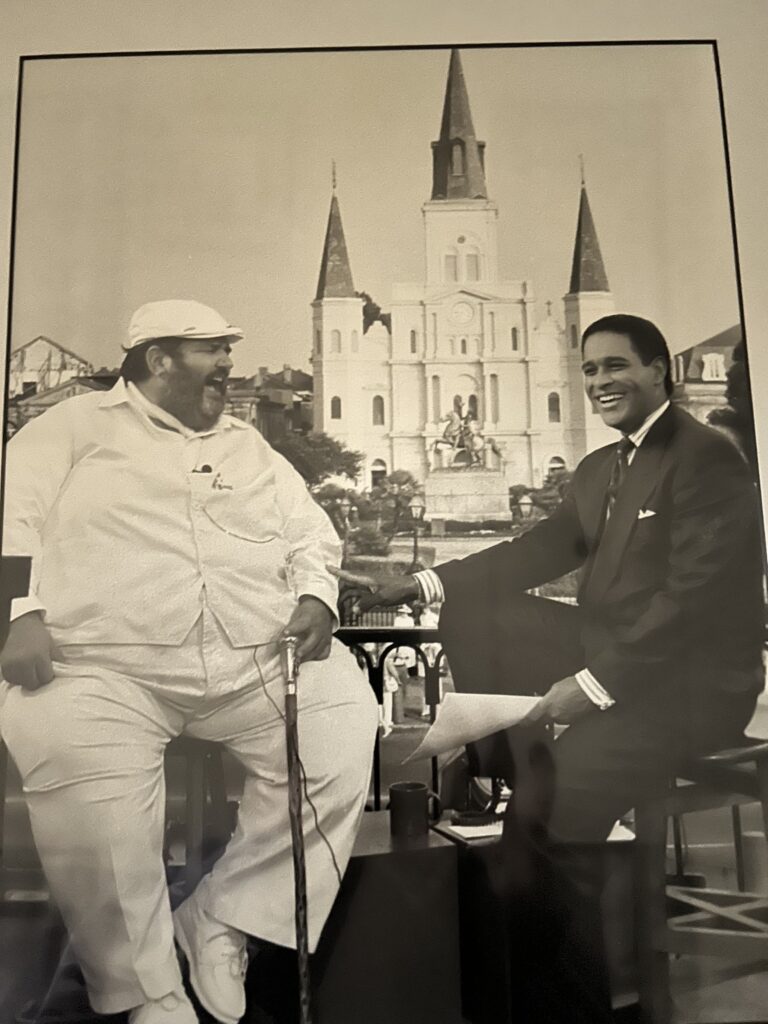
Breaking the Mold: Chef Paul’s Television Revolution
Television soon became Chef Paul’s most powerful platform. In an era when cooking shows were formal and often stiff, Chef Paul’s natural charisma and down-home authenticity made him a revelation on screen. Beginning in 1995, he created and starred in five PBS cooking series: “Fork in the Road,” “Fiery Foods,” “Kitchen Expedition,” “Louisiana Kitchen,” and “Always Cooking!” His warm, engaging presence and ability to make complex dishes seem approachable made him a natural on camera. Each episode ended with his trademark sign-off: “Good cooking, good eating, good loving!” – a phrase that encapsulated his joyful approach to food and life.
What made Chef Paul different from earlier TV chefs was his storytelling ability. While Julia Child taught technique and precision, Chef Paul shared the cultural significance behind each dish, weaving tales of his childhood in Opelousas, Louisiana, explaining how families made use of every ingredient, and connecting viewers to the emotional heart of Louisiana cooking. He wasn’t just teaching recipes; he was sharing a cultural heritage.

Record-Breaking Success Across All Platforms
His instructional cooking videos, “Louisiana Kitchen: Vol. 1: Cajun Blackened Redfish” and “Vol. 2: Cajun & Creole Classics,” became unexpected commercial hits, topping the Billboard charts for 53 consecutive weeks – an unprecedented achievement for culinary content. In the early 1990s, Chef Paul’s life story was even featured on A&E’s “Biography” series, cementing his status as a cultural icon beyond the food world.
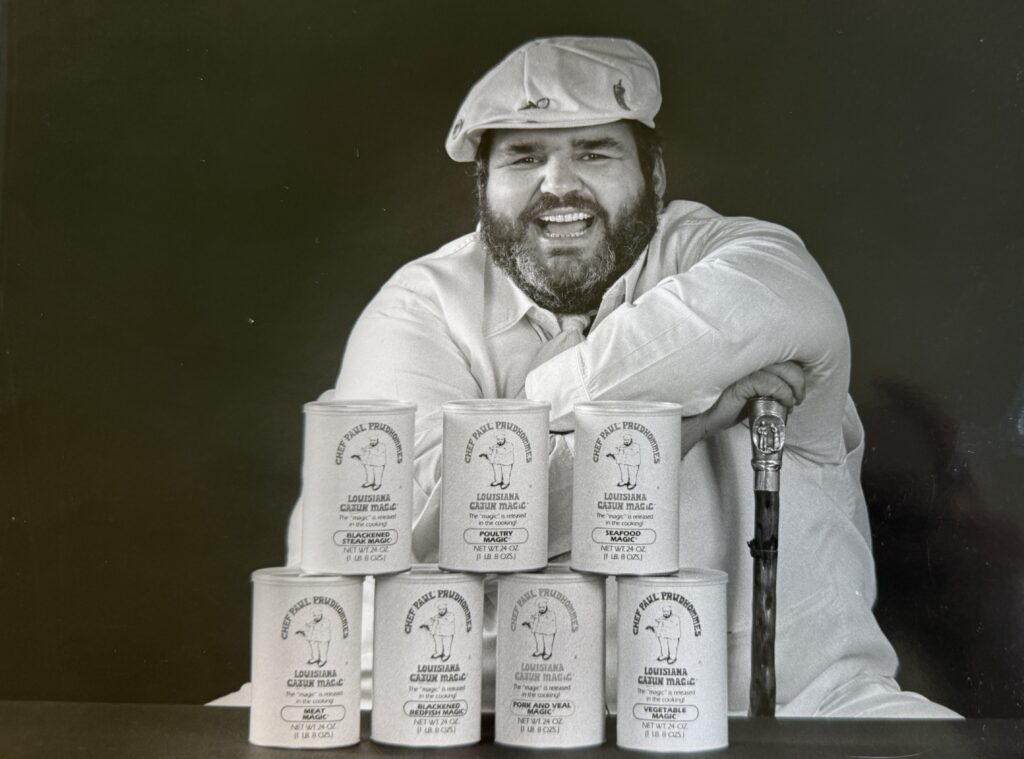
Of course, he also pioneered the concept of chef-branded products with his Magic Seasoning Blends, which began humbly with foil packets of spices shared with curious K-Paul’s customers. This venture would grow into a global enterprise with distribution in all 50 states and over 40 countries – a story we’ll explore in greater detail in a later chapter.
Chef Paul’s media savvy extended to his interactions with journalists and food writers. He regularly welcomed prominent figures like Craig Claiborne of The New York Times into his kitchen, sharing his techniques and philosophy. When New York Times reporter William Grimes described him as “the undisputed pontiff and grand panjandrum of the Cajun and Creole cookstove, that genial genius of massive girth,” it captured both his authority and his approachable nature.
Regular appearances on national television programs like NBC’s “Today Show,” ABC’s “Good Morning America,” CBS “20/20,” “Late Night with David Letterman,” and “Larry King Live” brought Cajun cuisine into American living rooms. Chef Paul was particularly beloved by Regis Philbin, who would spot him on the street in New York and spontaneously invite him onto his show the next day.
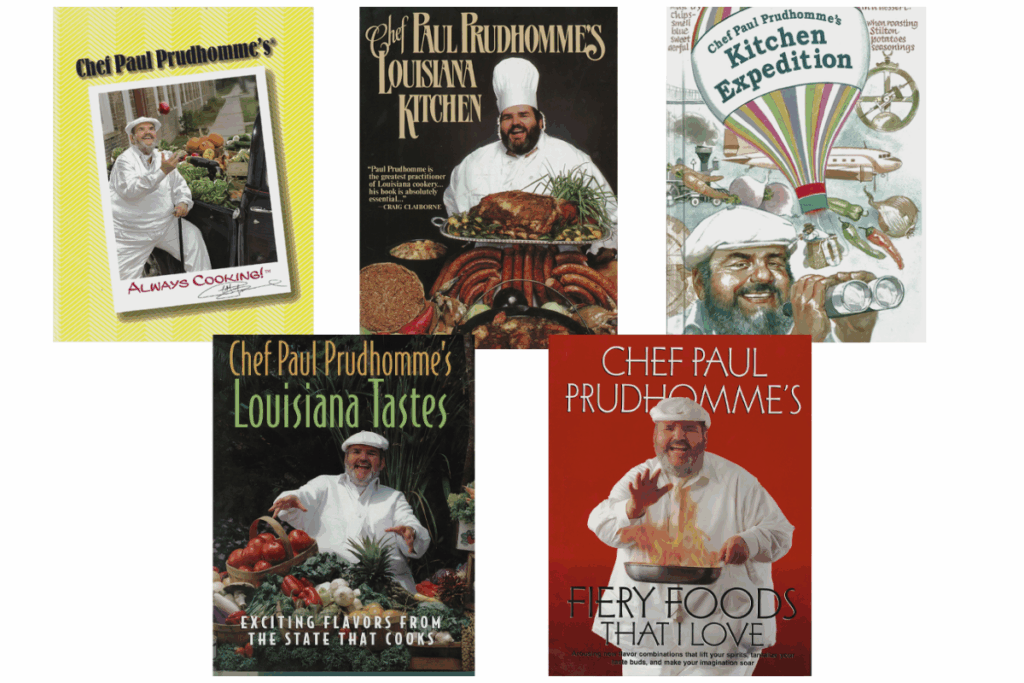
Building the Blueprint for Modern Celebrity Chefs
What truly set Chef Paul apart as a media pioneer was his understanding that food was about more than nutrition – it was about emotion, connection, and joy. “Food is a celebration of life,” he often said. “It’s a universal thing: shared needs and shared experiences.” This philosophy infused all his media appearances, making viewers feel they weren’t just learning to cook; they were being invited into the Prudhomme family kitchen.
By the time the Food Network launched in 1993 and the era of the celebrity chef truly began, Chef Paul had already built the blueprint that many would follow: cookbooks, television shows, product lines, and a distinctive personal brand. Yet he never lost sight of his roots or compromised his standards for commercial success. His media presence wasn’t about self-promotion; it was about sharing the soul of Louisiana cuisine with the world.
Today, in a world of Instagram chefs and TikTok recipes, Chef Paul’s genuine approach to media feels more relevant than ever. He didn’t need filters or gimmicks – his passion for authentic cooking and his natural storytelling ability were enough to captivate audiences across all platforms. In this way, he didn’t just pioneer Cajun cuisine in America; he pioneered a new way for chefs to connect with the public, building bridges between traditional cooking and modern media that continue to influence food culture today.
